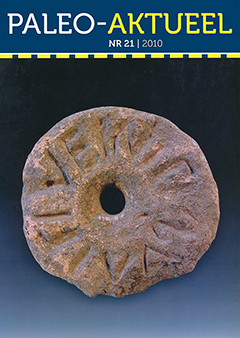Stroobos en Gaarkeuken: sleutelsites middeleeuwse veenontginning in het Westerkwartier (Gr.)
Samenvatting
Stroobos and Gaarkeuken: key sites of medieval peat reclamation sites in the Westerkwartier district (province of Groningen). Peat reclamation east of the Lauwers, the stream that now forms the border between the provinces of Friesland and Groningen, is traditionally thought to have started in the Carolingian period. However, no hard facts were available, owing to lack of archaeological evidence. Two man-made exposures at Stroobos and Gaarkeuken recently changed this situation, providing both geological and archaeological data on landscape development and its correlation with human intervention. A favourable circumstance was the sedimentation of Lauwers clay on top of the former peat surface. It was found that peat reclamation started here as early as the 7th or 8th century, but whether the parcelling system was opstrekken (parallel reclamations starting from a road, dike or waterway) from the very start remains disputable. The gradual change of Stroobos into a salt marsh did not discourage the farmers from tilling the land, albeit that they moved to higher grounds nearby. At Gaarkeuken, six kilometres to the east, with no higher grounds within reach, it required a greater effort to continue arable farming as the sea level rose, and the crofters withstood the flooding in a makeshift way by cutting trenches and ditches. Archaeology and geology complement each other in documenting the early medieval occupation of the coastal marshes predating the Lauwers estuary which evolved in the High Middle Ages.

